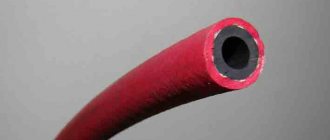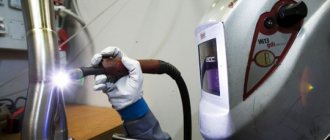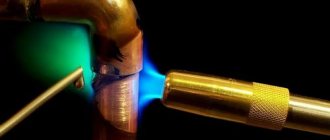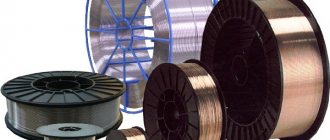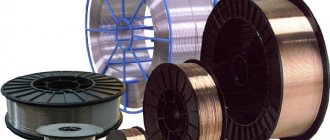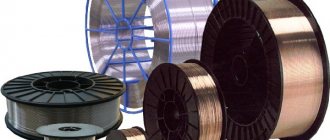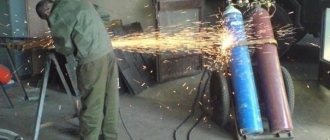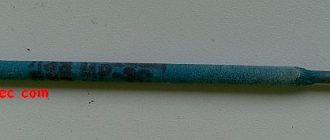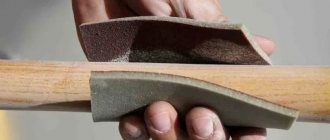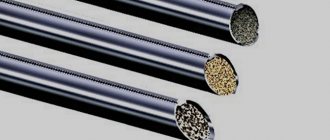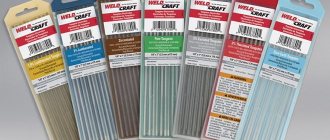Gas welding hoses are used to transmit pressurized media used in the welding process. They are designed to perform welding work in different climatic regions at air temperatures at the work site from – 55.0 to + 70.0 C. In the welding process, hoses are used for gas welding of 2 types of fuel, while one is used for oxygen and the other for liquefied gas . The rules for safe welding work limit the length of use of hoses - above 9.0 and no more than 30.0 m.
Purpose and scope
Welding technology is in demand, especially when performing large-scale installations, for example, the construction of hydroelectric and nuclear power plants. This is due to the reliable and efficient technology. The gas provides a high melting temperature at which the edges of the material melt, forming a weld pool. The welding kit is quite simple, it includes a hose for gas welding and cutting metals, gas cylinders, a torch device or cutter. A special load lies on the hoses through which the fuel mixture and O2 are transported. They are produced not only with high quality, but also with state standards.
The product for gas welding work is made in the form of a multilayer structure. The main material is elastic rubber or rubber. A thread frame is installed between the outer and inner layers of rubber, which is responsible for ensuring the design strength of the structure. Reinforcement is done with thread or fiberglass.
What do gas welding sleeves look like?
All rubber hoses for gas welding are assigned to the following classes according to their intended purpose:
- 1 – used for transporting propane-butane and acetylene gases under high pressure.
- 2 – used to move gasoline or other energy carriers in the liquid phase.
- 3 – mounted in schemes for organizing the welding process for the movement of oxygen with high pressure up to 20 atm.
Technical characteristics of hoses by class:
| Allowable diameter (mm) | Allowable pressure (atm) | Classification | Length in bay (m) | Color | |
| 6.30 | 6.30 | 1 | 50.0 | Black + red stripe | |
| 9.0 | 6.30 | 1 | 50.0 | Black + red stripe | |
| 12.0 | 6.30 | 1 | 50.0 | Black + red stripe | |
| 6.30 | 6.30 | 2 | 50.0 | Black + yellow stripe | |
| 9.0 | 6.30 | 2 | 50.0 | Black + yellow stripe | |
| 12.0 | 6.30 | 2 | 50.0 | Black + yellow stripe | |
| 6.30 | 20.0 | 3 | 50.0 | Black + blue stripe | |
| 9.0 | 20.0 | 3 | 50.0 | Black + blue stripe | |
| 12.0 | 20.0 | 3 | 50.0 | Black + blue stripe | |
| 16.0 | 20.0 | 3 | 50.0 | Black + blue stripe | |
Gas welding hoses
Sort by: by popularity cheap first by name
Gas welding uses propane, butane, acetylene, liquid fuel and oxygen under pressure. Special sleeves are used to transfer them to welding equipment. The admissibility of using a particular hose is determined by the substance being transferred. Based on this condition, gas welding hoses are divided into three classes:
- Class I includes a hose for transmitting gas (butane, propane, acetylene, city gas) under a working pressure of 6.3 kgf/sq.m. cm (0.63 MPa);
- Ko II - for supplying liquid fuel such as gasoline or kerosene and their mixture under a pressure of 0.63 MPa;
- to III – for supplying oxygen pressure up to 2 MPa.
Rubber hoses for welding are a type of rubber products that can withstand enormous loads and not lose their consumer qualities under conditions of high and low temperatures. Technical characteristics indicate that the hoses do not lose their technical qualities in the temperature range from - 55 to + 70 degrees Celsius.
An important feature of the product is a high safety margin, which when ruptured by pressure exceeds three times.
No less important properties of welding hoses are their elasticity and resistance to aggressive environments.
Structurally, welding sleeves have 3 layers: inner and outer rubber layers, separated by a thread frame. The frame is made of cotton fibers or based on (un)impregnated chemical fiber.
In this case, the color of the outer layer must comply with GOST, which determines the relationship of color with the purpose of the sleeve. Thus, the red color of the hose suggests its use for gas transmission, yellow for liquid fuel, and blue for oxygen.
You can get competent advice regarding the suitability of the welding hoses presented on the website to your needs from our managers by phone. 290-10-12. You can place an order directly through the website or by telephone.
vsyasvarka.ru
Design features
The most highly resistant O2 hose complies with the parameters of GOST 9356-75 and consists of an external and internal rubber coating that ensures an integral structure of the cotton base. According to the parameters of GOST 9356-75, all hoses must, in addition to markings, have a colored stripe; for O2 it is blue. There are also differences for use in climatic conditions in order to ensure their frost resistance at the minimum design outdoor temperature. Oxygen hoses are made with special tightness, guaranteeing the integrity of the structure even when the medium pressure is higher than permissible. In the event of a rupture, the hose design provides a 3-fold reserve of protection that prevents the movement of gas in the area of work.
Requirements for all classes of gas welding products have tolerances and specified flexibility. But there are general requirements - the outer coating must be free of cracks, folds, and any bubbles, which subsequently cause a rupture in the structure of the material. Subject to compliance with state requirements, the service life of gas hoses according to GOSTs is set at 1.5 years. After this, experts in Moscow advise replacing it, even if outwardly they look acceptable.
The hoses supplying O2 and propane to the burner are made of vulcanized rubber, protected by paper or linen gaskets. To pump kerosene or gasoline fuel, a 4.0 mm durite hose made of special rubber that is resistant to these substances is used.
All hoses are subject to control and special measurement methods in accordance with the requirements of GOST 8.051.
Types of measurement:
- Frost resistance, the hose is measured after cooling at the design T for 4 hours, with a double bend of 180 degrees around an installation of a certain diameter, while there should be no cracks on the surface.
- Tightness with pressure testing higher than calculated.
- Gasoline resistance of the inner layer according to GOST 9.030 on hose samples cleared of glue and threads.
- Strength and tensile strength according to GOST 6768. After testing, the deformation of the samples is checked.
All hoses for gas welding are subject to control and special measurement methods in accordance with the requirements of GOST 8.051.
Sleeves for gas welding GOST 9356-75 with a diameter of 16 mm in the online store mtrservis.ru
The gas welding hose can be used in areas where it is necessary to supply liquid or gaseous fuel under pressure.
The flexible gas hose has two distinctive color stripes on the outside, indicating that it belongs to one of three classes. With a red stripe - I class, with a yellow stripe - II class, with a blue stripe - III class.
GOST 9356-75 Download GOST 9356-75 in pdf
LLC PP "MTR-Service" offers to buy hoses for gas welding with delivery to Moscow at a competitive price.
- Price
- Characteristics
- Detailed description
Hose I class
Internal diameter, mm. Outer diameter, mm. Working pressure, atm. Length, lm Weight, kg. / p.m.
| 6.3 atm | 100, 150 | 0.14 | |
| 9 | 18 | 50, 100, 150 | 0.24 |
| 12 | 22 | 75, 150 | 0.36 |
Hose II class
Internal diameter, mm. Outer diameter, mm. Working pressure, atm. Length, lm Weight, kg. / p.m.
| 6.3 | 13 | 6.3 atm | 100 | 0.14 |
| 9 | 18 | 100 | 0.24 | |
| 12 | 22 | 75 | 0.36 |
Hose III class
Internal diameter, mm. Outer diameter, mm. Working pressure, atm. Length, lm Weight, kg. / p.m.
| 6.3 | 13 | 20 atm | 50, 100, 150 | 0.14 |
| 9 | 18 | 50, 100 | 0.24 | |
| 12 | 22 | 50, 150 | 0.36 | |
| 16 | 26 | 50, 100 | 0.43 |
Example of a symbol: Sleeve class. III oxygen f 9 mm (20 atm) GOST 9356-75 class 3 - hose class 9 - internal diameter (mm) 20 atm. — working pressure (atm)
GOST 9356-75 - State standard
All three types of hoses comply with GOST 9356-75 and can be used in areas where it is necessary to supply liquid or gaseous fuel under pressure.
The flexible gas hose consists of a thread frame and a rubber layer; on the outside it has two distinctive color stripes, indicating that it belongs to one of three classes.
At MTP-service you can buy an oxygen, gas hose or a hose for liquid fuel.
The hoses are used in temperature conditions from -35C to +70C for temperate climates and from -55C to +70C in cold climates.
Gas hose acetylene, propane (Class I)
A gas hose with a red stripe is very often used in residential buildings to connect gas equipment to cylinders, pumps, gas pipelines and is more often used as a hose for:
- gas stove, cylinder,
- geyser, burner, boiler,
- propane tank, cutter,
- welding machine,
- gas welding, cutting,
- semi-automatic,
- metal cutting,
- oxygen cylinder,
- gas stove, cylinder.
The working medium used for the gas hose is all types of gas fuel: acetylene, city gas, propane, butane. Hence it is often called propane, acetylene or butane hose.
Hose for liquid fuel (Class II)
The yellow stripe hose is used for welding and metal cutting equipment that uses liquid fuels:
- diesel fuel,
- petrol,
- kerosene,
- White Spirit
- and other mixtures.
Oxygen hose (III class)
Blue stripe oxygen hose is very commonly used and well in demand as a welding hose or metal cutting hose.
The oxygen hose is used as a hose for:
When using an oxygen hose, you can use a working medium in the form of oxygen, gas and liquid fuel, so it is universal.
Frequently asked questions about gas hoses
Our manufacturing enterprise MTP-service has been in the rubber products market for more than 7 years. We have extensive experience in communicating with clients and are always ready to help make a choice.
What is the diameter of the gas hose?
Determined by the internal diameter and measured in millimeters. MTP-service supplies gas (oxygen) hose 6.3mm, 9mm, 12.5mm.
What is the length of the gas hoses? What is the maximum length of the gas hose?
The hose is packed in coils of 50 meters. In our company you can buy a gas hose from 1 to 50 meters.
Where to buy a gas hose?
You can order a sleeve on our website or by calling +7. The MTP-service warehouse is located at Chelyabinsk, st. 2nd basic 37.
How much does a gas (oxygen) hose cost?
Oxygen hose, the price depends on the required diameter and manufacturer, so it ranges from 30.9. up to 80.6 rub. per meter
Gas hose, price also varies from 25.1. up to 47.9 rub. per meter
The price of a hose for liquid fuel is from 47.3 to 73.5 rubles. per meter
Gas hose, which is better?
It all depends on what purpose you are purchasing it for. The oxygen hose with the blue stripe is universal.
What pressure is applied to the oxygen hose?
The pressure for oxygen hoses is increased and is 2MPa. For class I and II hoses, the pressure is much lower - 0.63 MPa.
Classification of classes, parameters and sizes of oxygen hoses
Currently, 2 classes of special products are produced, in the form of a simple sleeve or as a multifunctional cable complete with a gas burner. The latter are universal in purpose and are equipped with: a hose with a built-in welding gun-torch and a special connecting connector. This kit is suitable for a semi-automatic process that requires the wire to be fed to the processing site along a guide channel with a compressed spiral. The inner surface of which is usually strengthened to protect the structure with a special tube made of wear-resistant materials, such as Teflon.
In addition to the traditional single-channel transmission method, the hoses can also operate according to the parallel supply principle. In this case, several channels are placed simultaneously in one coaxial cable. The permissible length of welding hoses is from 8.0 to 20.0 m; it is prohibited to use hoses shorter than 9.0 and longer than 30.0 meters during work. Certain tolerances for increasing the length are allowed for large slip structures up to 40 m, and above 40 m, a special permit for work will be required in the presence of the person responsible for safety.
It is permissible to lengthen the sleeves with nipples made of steel or brass, while in order to avoid breakdown and leaks, the sleeves with nipples are additionally secured with soft types of wire. The length of the connecting sections cannot be less than 3 m. It is prohibited to use smooth-bore tubes to connect structures.
Before connecting the hoses with the cutter, they must be purged with working media: oxygen, respectively, O2, and propane, with propane. During the welding process, it is prohibited to pull the hoses or step on their sections and place them near an open fire or a high-temperature source. They must also be protected from sparks. Upon completion of the process, the hoses are carefully collected onto the reel and placed on fastenings or placed in a place specially prepared for storage.
Symbols and markings
On each hose, the manufacturer encrypts information containing the technical capabilities of the product:
- Purpose and approvals for use;
- cross-sectional diameter of the internal free space;
- permissible maximum medium pressure.
For products capable of operating in environments with negative temperatures, the marking will contain the designation “HL”.
Example: III-9-2.0-U GOST 9357-76:
- Hose 3rd class, diameter 9.0 mm;
- gas pressure 20 atm (2.0 mPa);
- “U” for the central zone of the Russian Federation, with an ambient temperature range of -36 C: +72 C.
Marking must be applied to each hose at certain intervals by embossing, color marking or other visible and durable method. The designation must contain the following information:
- Information about the manufacturer;
- hose classification;
- internal diameter size, mm;
- product release date, in month and year format, indicating the last two digits;
- maximum permissible medium pressure, MPa;
- current standard.
The designation of hoses for gas welding contains information about the manufacturer, production date.
Then color marking is applied, the color is white on colored hoses, or color stripes are simply indicated. Hoses that will be used in conditions of high outdoor temperatures, for example, tropical climates, are designated according to the requirements of GOST 15152, and in northern conditions according to NTD. Markings are marked on the corrugated surface of the sleeves using the embossing method, including for “HL” and “T”.
All hoses are collected into coils with an external diameter of at least 0.300 m and tied in three places with a wide 40mm calico tape, guaranteeing the safety of the coil. Each one has a label with mandatory technical information:
- Manufacturer's data;
- hose length in coil, m;
- batch numbers and release date;
- letter for products made from unimpregnated threads;
- Responsible for packaging and quality control stamp.
Welding sleeve
Rubber-fabric sleeves for gas-flame processing of materials.
Sleeves (hoses) are used to supply gas to the burner or cutter. They must have sufficient strength, withstand gas pressure, be flexible and not restrict the welder’s movements. Gas hoses for welding are made of vulcanized rubber with fabric gaskets.
Depending on the purpose, rubber hoses for gas welding and metal cutting are divided into the following classes (GOST 9356-751):
• I - for supplying acetylene, city gas, propane and butane at a pressure of 0.63 MPa (6.3 kgf/cm2);
• II - for supplying liquid fuel: gasoline A-72 in accordance with GOST 2084-77, white alcohol in accordance with GOST 3134-78; kerosene or their mixture under a pressure of 0.63 MPa (6.3 kgf/cm2);
• III - for supplying oxygen at a pressure of 1.96 MPa (20 kgf/cm2), 3.92 MPa (40 kgf/cm2).
• The hoses are operational in areas with temperate and tropical climates at ambient temperatures from -35 to +70 °C and in areas with cold climates at temperatures from -35 to +70 °C2.
The main dimensions of hoses for gas welding and metal cutting are given in the table
GOST 9356-75 applies to rubber hoses with a thread frame used for supplying under pressure acetylene, propane, natural gas, butane, helium, argon, liquid fuel and oxygen to devices for gas welding and metal cutting. The standard does not apply to hoses for special purposes.
For lower temperatures, it is necessary to order hoses according to separate specifications, according to which the hoses are made of frost-resistant rubber, unpainted. For example, rubber grade 14K-10 according to MRTU 38-5-11-66-64 can withstand temperatures down to -65 °C.
The length of the sleeves must be agreed upon between the manufacturer and the consumer. The maximum deviation along the length should be no more than ±1%.
The deviation from the roundness (ovality) of the sleeves should not be greater. maximum deviations of outer diameters indicated in the table.
The difference in thickness of the walls of the sleeves should not be more than 0.5 mm.
Examples of symbols:
• class I hoses with an internal diameter of 16 mm for a working pressure of 0.63 MPa, operable in areas with a temperate climate:
Sleeve I- 16-0.63-GOST 9356-75;
• the same for a hose operable in areas with a tropical climate (T):
Sleeve 1-16-0.63-T GOST 9356-75;
• the same, for a hose operable in areas with cold climates (CL):
Sleeve I -16-0.63-HL GOST 9356-75.
For small burners, oxygen and acetylene hoses with an internal diameter of 6.3 mm are used, for burners and cutters of normal and high power - hoses with an internal diameter of 9, 12 and 16 mm.
Technical requirements. Hoses for gas welding and metal cutting must be manufactured in accordance with the requirements of GOST 9356-75 according to technological regulations approved in the prescribed manner.
Sleeves must consist of an inner rubber layer, a thread frame made of cotton fiber or based on unimpregnated and impregnated chemical fibers and an outer rubber layer.
Depending on the purpose, the outer layer of the sleeve should be the following color:
• red – class I hoses for acetylene, propane, etc.;
• yellow – class II hoses for liquid fuel;
• blue - class III hoses for oxygen.
An outer layer of black color is allowed for hoses of all classes suitable for use in areas with tropical, temperate and cold climates. as well as the designation of the hose class with two rubber colored stripes on the outer layer for all climatic regions or groups of two adjacent reefs or grooves.
The height of the reefs or the depth of the marks is from 0.2 to 0.3 mm, the width is from 0.4 to 0.5 mm. The distance between groups of reefs or scratches is from 3 to 4 mm. Class I sleeves are designated by a single group of reefs or notches, class II sleeves by two groups of reefs or notches, and class III sleeves by three groups of reefs or notches.
For a class III hose for supplying oxygen at a pressure of 3.92 MPa with a black outer layer, the hose class designation in the form of colored stripes or reefs is not applied.
Sleeves suitable for use in areas with temperate and tropical climates. must be frost-resistant at temperatures not lower than minus 35 °C.
Hoses suitable for use in areas with cold climates must be frost-resistant at temperatures not lower than minus 55 °C.
Hoses of all classes must be sealed at a hydraulic pressure equal to 2p+^ts%, where p is the value of the operating pressure in MPa (kgf/cm2).
The hoses must have at least a threefold safety factor when breaking under hydraulic pressure.
Class II hoses must be petrol resistant.
The ends of the hoses must withstand without breaking the tension in the radial direction when put on the corresponding nipple of the gearbox, cutter or torch.
Sleeves should be flexible.
The surface of the inner rubber layer must be free of folds, porosity, bubbles and cracks.
The surface of the outer rubber layer should be smooth or corrugated without bubbles, peeling or exposed areas of the load-bearing frame.
The average service life of hoses is set at one year and six months.
Sleeve markings. On each sleeve along the entire length or at intervals equal to the ordered length of the sleeve, by embossing, colored paint or other means, markings must be applied indicating:
• name or trademark of the manufacturer;
• sleeve class;
• internal diameter, mm;
• dates of manufacture: month and year (last two digits);
• working pressure, MPa;
• designations GOST 9356-75.
The paint color for markings should be white on sleeves with a colored outer layer or colored stripes.
On sleeves with a black outer layer, the color of the marking must correspond to the class of the sleeve.
It is allowed to apply markings on sleeves with a corrugated surface using the embossing method, including the letters “HL” and “T”.
The sleeves are rolled into coils with a diameter of at least 300 mm and tied in three places with a fabric ribbon 30-40 mm wide made of calico (GOST 1104-691) or other dressing materials that ensure the safety of the packaging. The use of dressings made from cotton fiber was allowed until 01/01/87.
A label is attached to each bay indicating:
• name of the manufacturer;
• total sleeve length, m;
• lot numbers;
• packer's signature.
There must be a technical control stamp on one end of each hose or label, as well as the letter “H” for hoses made using unimpregnated chemical fiber threads.
' GOST 1104-69. Domestic cotton fabric. Technical conditions.
Hoses are transported in covered vehicles of all types in accordance with the cargo transportation rules in force for this type of transport.
Sleeve storage. Sleeves must be stored indoors at temperatures from -20 to +25 °C. Hoses should be stored in coils no more than 1.5 m high or in a straightened form and placed at a distance of at least 1 m from heat-emitting devices.
Before installation, hoses stored at sub-zero temperatures must be kept at room temperature for at least 24 hours.
Sleeves must be protected from exposure to direct sunlight and heat, from exposure to oil, gasoline, kerosene or their vapors, as well as from acids, alkalis and other substances that destroy rubber and thread frame.
It is not allowed to store hoses near operating electronic and other equipment that can emit ozone, as well as artificial light sources that emit ultraviolet rays.
The guaranteed shelf life of hoses is two years from the date of manufacture.
The guaranteed service life of the hoses within the guaranteed storage period of the hoses is one year.
Operation of hoses. The outer layer of hoses used for supplying acetylene, propane and butane should be red, oxygen - blue. It is allowed to mark the outer layer of the black sleeve with two rubber colored stripes. The width of the colored stripes and the distance between them are applied to the hoses in any form, but uniformly for all hoses available at the enterprise. Colored stripes are applied to the sleeves at their ends with a length of at least 1 m.'
The length of each hose, as a rule, should be 8-20 m, since with a length of more than 20 m the pressure loss in the hoses increases significantly. When working with liquid fuel, the length of the hose should not exceed 10 m. It is allowed to use hoses with a length of no more than 30 m in workshop conditions and 40 m during installation.
The sleeve should consist of no more than three separate pieces connected to each other by special double-sided nipples. The ends of the hoses must be securely fastened to the connecting nipples of the equipment (burners, cutters, gearboxes) with special clamps.2 Use smooth
' Color stripes are not applied to hoses for supplying oxygen under a pressure of 4 MPa (40 kgf/cm2) with a black outer layer.
2 Nipples should not be used to connect hoses through which kerosene or gasoline flows, since if there is no tightness at the connection point, leaking kerosene (or gasoline) may catch fire. Instead of clamps, it is allowed to fasten the sleeves with soft annealed (knitting) wire in at least two places along the length of the nipple. The hoses should be fitted tightly onto the water valve nipples, but not secured.
nipples or sections of smooth pipes are prohibited. Nipples for oxygen and acetylene hoses are made of brass or steel, respectively. It is prohibited to connect the ends of acetylene hoses with copper nipples. The minimum length of a section of joined hoses for propane-butane must be at least 10 m, hoses for other gases - at least 3 m.
It is prohibited to use hoses for oxygen instead of hoses for flammable gases or liquids and vice versa. Care must be taken at all times to ensure that flammable gas hoses are not reused to supply oxygen. It is prohibited to blow through a hose for flammable gases with oxygen and an oxygen hose with flammable gas, and also to interchange hoses during operation.
The use of rubber-fabric sleeves with cracks, cuts, swelling and abrasions is not allowed. The outer surface of the hoses should be free of peeling, bubbles, exposed areas of braid, dents and other defects that affect their performance.
The hose connection points must be carefully checked for tightness before and during work. The sleeves on the nipples of the water valves should be placed tightly, but not fastened.
It is prohibited to bend or pull the sleeves during work. Sleeves must be protected from all kinds of damage, fire, etc.; intersection of hoses with steel ropes (cables), cables and electric welding wires is prohibited.
It is prohibited to use defective hoses or wrap them with insulating tape or other similar material. Damaged areas must be cut out.
Sleeves should be stored on special hangers in places designated for these purposes. During work, sleeves should not be placed on the shoulders, knees or between the legs. When laying hoses, they must not be flattened, twisted, come into contact with electrical wires, or bent. Sleeves should be protected from contamination with oils or grease, from sparks and exposure to high temperatures.
When using manual equipment, it is prohibited to connect forks, tees, etc. to one hose to power several burners (cutters). In areas of passages and driveways, hoses must be placed in protective boxes (angles, channels) to avoid possible damage.
Hoses in service must be periodically, at least once a month, subjected to external inspection and leak testing. The frequency of inspection and testing of hoses, the procedure for carrying them out and recording the results are established in the instructions in force at the enterprise.
Hoses must be subjected to a hydraulic strength test once every 3 months. A pressure equal to 1.25 P, where P is the working pressure, MPa (kgf/cm2). The sleeves can withstand this pressure for at least 10 minutes. In the presence of oily waters, it is possible to replace the hydraulic test with a pneumatic (air or nitrogen purified from oil and mechanical impurities) method of immersion in a bath of water. There should be no ruptures, water leakage in the form of dew, local swelling or release of air (nitrogen) bubbles on the hose.
The test results must be recorded in a log.
If a defect in the hose is detected during the test period, the defective areas should be cut out and individual pieces connected with double-sided nipples.
The repaired hose must be re-tested for leaks.
To remove soot deposits from the walls of the hoses, after the leak test, the hoses should be purged with dry nitrogen under a pressure of 5-6 kgf/cm2. Blowing time, depending on the insertion of the hose, is 5-10 minutes.
New hoses must be purged before use: for flammable gases - with an inert gas, for oxygen - with oxygen, nitrogen or air that does not contain traces of oils.
Transportation and storage
Transportation of products packaged in a bay is carried out by any covered vehicles in compliance with the requirements of cargo transportation that apply to road and rail transport. If there is a special agreement between the plant and the buyer of the cargo, it can be packed in soft containers or transported in bags.
For the transportation of hoses, a transport designation is used indicating additional data on the class of hose products, packaging length and the current standard.
Hoses are stored in rooms with ambient temperatures from – 20.0 C to +25.0 C. They are placed in coils with a maximum height of up to 1.5 m or in unfolded form. Hoses should not be exposed to direct sunlight or open flame. They must be protected from oil or gasoline solvents, as well as aggressive chemical solutions in the form of acids and alkalis, which can destroy rubber and the protective frame.
It is prohibited to store products near functioning radio-electronic or other equipment capable of producing ozone, as well as light sources that emit ultraviolet rays.
